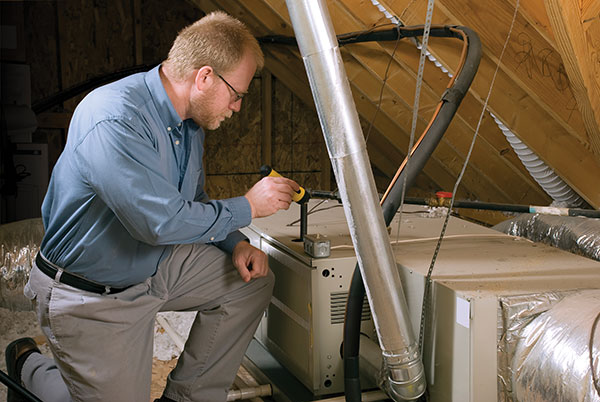How to Perform Your Own Home Energy Audit
Feb 13, 2023 02:31AM ● By Family Features
Running a household can get expensive. Between regular maintenance and utility costs, things can add up quickly over the course of a month.
One of the most costly parts of owning a house is typically heating and cooling. If your house isn’t sealed or energy efficient, your heating and cooling costs may climb every season.
However, an energy audit is one way to find air leaks and other inefficiencies around your house. Consider these tips from the experts at Best Pick Reports to perform a home energy audit and take steps to address any issues.
 What to Look for During the Home Energy Audit
What to Look for During the Home Energy Audit
Attic
- Check to see if the holes for your wiring, plumbing and piping are properly sealed and insulated.
- Check the hatch leading into the attic for air leaks. Test for air leaks by closing all the windows and doors then turning on the air conditioner or furnace. Hold a lit stick of incense near the hatch. If the smoke rises between the hatch and the frame, there might be a leak.
Ductwork
- Test for air leaks by turning on the heat or air conditioning in your home and feeling the ducts for any leaks. If you aren’t sure, shine a flashlight on the ducts and see if any dust is blowing.
Furnace and Water Heater
- Check the manufacture date on the furnace and water heater. These appliances lose efficiency over time. Furnaces should be replaced after 25 years, on average. Water heaters should be replaced after 10 years.
- Check your water heater’s insulation. If the water heater is hot to the touch, it isn’t retaining heat properly.
- Check the furnace filter. If it’s dirty or hasn’t been replaced within the last three months, your HVAC system may be working too hard.
Windows and Doors
- Check for drafty windows or doors by closing all the windows and doors then turning off the air conditioner, furnace and fans. Hold a lit stick of incense near all sides of the window or door frame and underneath the door. The direction the smoke wafts will tell you if there’s a draft.
What to Do After Your Home Energy Audit
Now it’s time to address any issues you found. Some of these fixes are straightforward enough you can likely handle them on your own. For others, you might need to bring in a professional.
Attic
- Seal holes around wires or pipes with high-temperature, flexible caulk or spray foam.
- Insulate your attic hatch by attaching foam insulation to the back of the hatch. If the hatch door doesn’t have weather stripping, add some.
Ductwork
- Repair leaky ductwork with duct sealant (mastic) or metal-backed (foil) tape.
- Insulate ducts as needed with duct insulation material rated at least R-6.
Furnace and Water Heater
- Replace furnace filters at least every three months.
- Wrap your water heater in an insulated blanket (R-8 or higher).
- Insulate the pipes attached to your water heater with foam pipe insulation or insulating tape.
Windows and Doors
- Replace failed caulking and weather stripping around windows and doors.
- Add a door sweep to exterior doors to eliminate the gap between the floor and the bottom of the door.
These home energy audit fixes are often just the beginning of making your house more efficient. To maximize your home’s efficiency, hire a professional home energy auditor to do a full inspection, both inside and outside. Visit bestpickreports.com and fivestarrated.com to find experts in your neighborhood.
Photos courtesy of Getty Images
